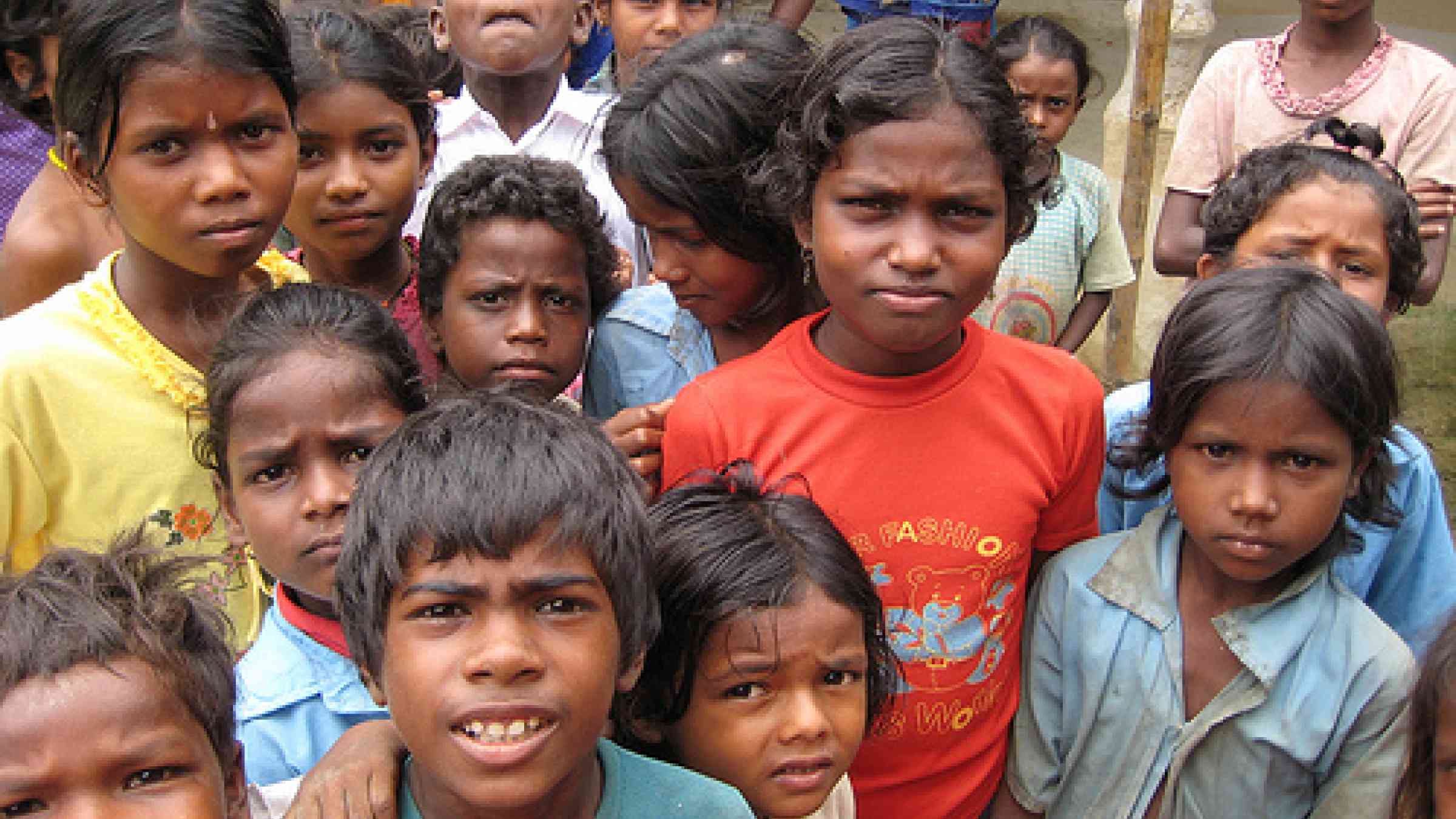UN endeavours to ensure that children have a say in climate change moves

As negotiations for a new climate change agreement to be reached in Copenhagen, Denmark, at the end of the year enter their final stretch, the United Nations is continuing its push to ensure that the voices and needs of children – among the most vulnerable to global warming – are not ignored.
Some 100 heads of State and government are gathering at UN Headquarters in New York today for a meeting on global warming convened by Secretary-General Ban Ki-moon, who hopes that the event will generate political momentum towards ‘sealing the deal’ in the Danish capital in December on an ambitious agreement on curbing greenhouse gas emissions.
“But the issue of children is very easily overlooked,” according to Ken Maskall, a special advisor for the UN Children’s Fund (UNICEF). Texts being negotiated by nations, he said, include “scant reference to children.”
Characterizing climate change as an issue of “intergenerational justice,” which exacerbates already existing problems such as poverty, inequity and degraded environments, he emphasized that “if we’re failing to act, we’re doing harm and infringing upon the rights of future generations.”
According to the World Health Organization (WHO), children bear a disproportionate burden of disease caused by environmental factors, exacerbated by social and economic conditions such as conflict, poverty and malnutrition.
Although they account for only 10 per cent of the global population, children under the age of five are victims of over 40 per cent of serious health risks resulting from environmental hazards, WHO said. Diarrhoeal diseases also claim almost 2 million children’s lives yearly, with most cases related to environmental conditions, such as contaminated water and inadequate conditions.
Global warming poses health risks – triggering catastrophic weather events, affecting food and water supplies, increasing air pollution and leading to the emergence of new infectious disease outbreaks – and will likely have the greatest impact on developing nations, which are the least able to cope and respond, according to the agency.
UN experts, however, point to health indicators as only one benchmark of measuring global warming’s impact on children.
“You have to look at the cumulative impact of climate change, which sets off a chain of reactions,” including aggravating poverty and malnutrition, said Maaike Jansen, who works as a Programme Officer for the UN Environment Programme (UNEP).
These, in turn, she said, could potentially interfere with a child’s mental development and educational achievements, leaving lasting effects.
Mitigation measures to curb greenhouse gas emissions are vital, Ms. Jansen pointed out. Equally crucial are adaptation strategies, ranging from improving disaster risk reduction activities, such as teaching children how to swim, improved water management and creating drought-resistant crops.
An end to “development as usual” is necessary to tackle climate change, said Lucy Stone, Climate Change Project Manager for UNICEF in the United Kingdom.
“All development now will have to factor in how to adapt to the changing climate” by erecting homes away from flood zones and hurricane-proofing buildings, among other measures, as well as how to move towards a low-carbon society, where renewable forms of energy replace fossil fuels as the main sources of energy, she noted.
World leaders are discussing the future of the war against global warming today and nations are gearing up towards Copenhagen, but children hold the “moral card” in the climate debate since they are the ones who will live with the decisions made now, Ms. Stone underscored.
Behavioural change can only be brought about by children, Mr. Maskall said, stressing the value of empowering kids and of environmental education targeted for young people.
“Children want to be taken seriously, and there is a new generation of young activists using all available media technology and increasingly are going to play a more forceful role in changing direction of debate,” he predicted.
UN agencies, including UNICEF, UNEP and the UN Development Programme (UNDP), are supporting an initiative called Unite for Climate, which seeks to heighten youth actions in finding solutions to global warming.
That scheme aims to swell the number of children involved in the fighting climate change, as well as bring together various climate campaigns from around the world.
Last month, the largest-ever youth climate change conference, organized by UNEP, was held in the Republic of Korea, with the 800 young participants pledging to plough ahead with efforts to ensure that global warming remains an international priority.
During the week-long Tunza International Youth Conference on Climate Change, young people agreed on regional action plans calling for, among other measures, reaching out to other environmental groups, educating others about the upcoming Copenhagen conference and utilizing social networking sites, such as Twitter and Facebook, to spread the message.
“There are a lot of indigenous cultures that are losing, because nobody wants to hear what we want to say, what we know about mother earth, and it is frustrating for us because we have so many things to share and the world doesn’t listen to us,” said Yaiguili Alvarado Garcia from the Kuna indigenous group in Panama.
“There are many things we asked the governments to do and we know it is hard, but we want to work with them. We just want to make a better place for the children, for the animals and plants. It is about time we stop thinking just for us and think also for other beings that cannot speak for themselves. It is time to stop being selfish,” she added.